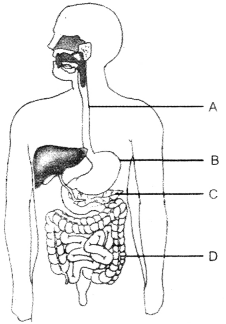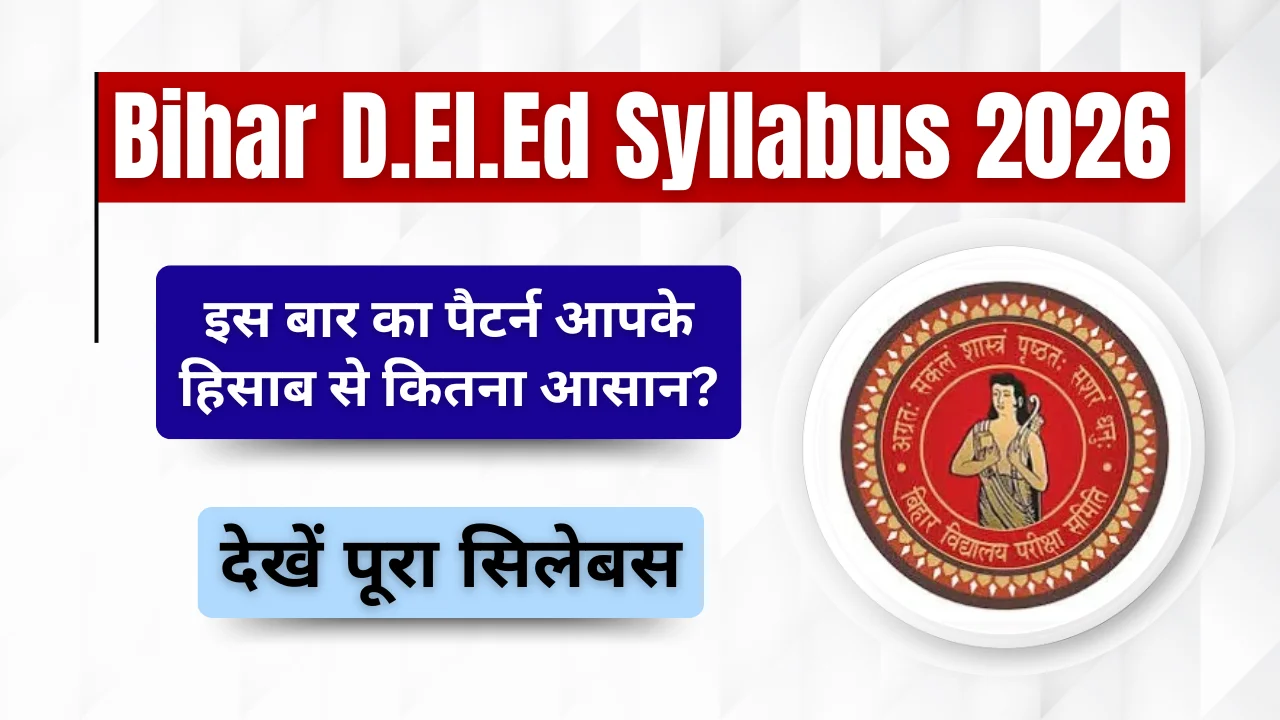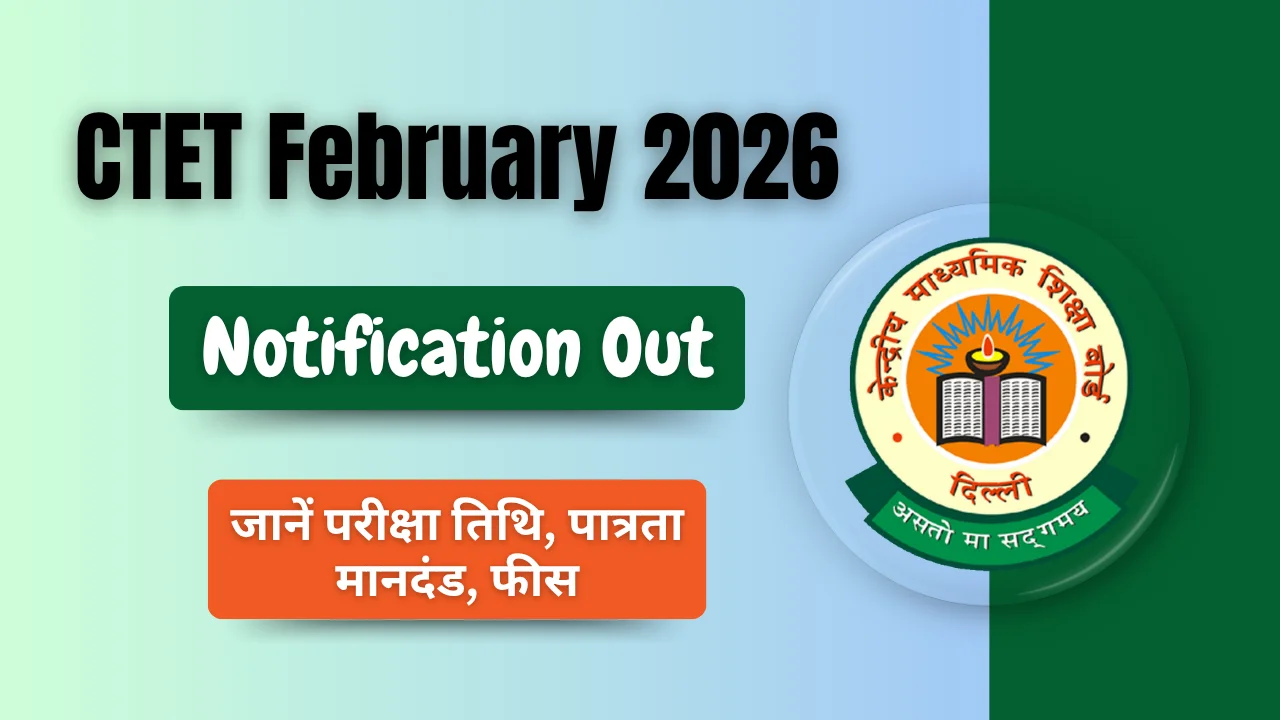CBSE Class 10 Science Chapter 6 Life Processes MCQ with solution or Answers
Here you can find latest MCQ question of Class 10 Science Chapter 6 – Life Processes with Answers, you can also find the previous as well as next chapter MCQ for your exam preparation. All these MCQ question Answers from NCRT book and according to CBSE syllabus.
1. The process of digestion is completed by:
(a) Intestinal juice
(b) trypsin
(c) bile juice
(d) pepsin
Answer: (a) Intestinal juice
2. Which of the following are energy foods?
(a) Carbohydrates and fats
(b) Proteins and mineral salts
(c) Vitamins and minerals
(d) Water and roughage
Answer: (a) Carbohydrates and fats
3. The mode of nutrition found in fungi is:
(a) Parasitic nutrition
(b) Holozoic nutrition
(c) Autotrophic nutrition
(d) Saprotrophic nutrition
Answer: (d) Saprotrophic nutrition
4. In which mode of nutrition an organism de-rives its food from the body of another living organism without killing it?
(a) Saprotrophic nutrition
(b) Parasitic nutrition
(c) Holozoic nutrition
(d) Autotrophic nutrition
Answer: (b) Parasitic nutrition
5. The site of photosynthesis in the cells of a leaf is
(a) chloroplast
(b) mitochondria
(c) cytoplasm
(d) protoplasm
Answer: (a) chloroplast
6. The part where the exchange of gases occurs during respiration is:
(a) Lungs and larynx
(b) Alveoli and throat
(c) Throat and lungs
(d) Alveoli and capillaries
Answer: (d) Alveoli and capillaries
7. The back flow of blood during the pumping of blood by heart is prevented by:
(a) Walls of ventncles
(b) Walls of atrium
(c) Valves in heart
(d) Walls between atria and ventricles
Answer: (c) Valves in heart
8. In amoeba, food is digested in the:
(a) food vacuole
(b) mitochondria
(c) pseudopodia
(d) chloroplast
Answer: (a) food vacuole
9. The process of digestion is completed by:
(a) Intestinal juice
(b) trypsin
(c) bile juice
(d) pepsin
Answer: (a) Intestinal juice
10. The extracellular fluid released from the capillaries is:
(a) serum
(b) plasma
(c) lymph
(d) mucus
Answer: (c) lymph
11. Which of the following events in the mouth cavity will be affected if salivary amylase is lacking in the saliva?
(a) Starch breaking down into sugars.
(b) Proteins breaking down into amino acids.
(c) Absorption of vitamins.
(d) Fats breaking down into fatty acids and glycerol.
Answer: (a) Starch breaking down into sugars
12. Which region of the alimentary canal absorbs the digested food?
(a) Stomach
(b) Small intestine
(c) Large intestine
(d) Liver
Answer: (b) Small intestine
13. Which of the following is not a digestive enzyme contained in the pancreatic juice?
(a) Lipase
(b) Hydrochloric acid
(c) Mucus
(d) Trypsin
(d) (i) and (ii)
(a) (i) and (iv)
(c) (ii) and (iii)
(b) (i) and (iii)
Ans:-(c)
14. The contraction and expansion movement of the walls of the food pipe is called:
(a) translocation
(b) transpiration
(c) peristaltic movement
(d) digestion
Answer: (c) peristaltic movement
15. The green colour of plants is due to the presence of
(a) chlorophyll
(b) carotene
(c) xanthophyll
(d) starch
Ans:-(a) carotene
16. During respiration exchange of gases take place in
(a) trachea and larynx
(b) alveoli of lungs
(c) alveoli and throat
(d) throat and larynx
Ans:-(b) alveoli of lungs
17. When a few drops of iodine solution are added to rice water, the solution turns blue- black in colour. This indicates that rice water contains:
(a) fats
(b) complex proteins
(c) starch
(d) simple proteins
Answer: (c) starch
18. The exit of unabsorbed food material is regu-lated by
(a) liver
(b) anus
(c) small intestine
(d) anal sphincter
Answer: (d) anal sphincter
19. In which of the following vertebrate group/groups, heart does not pump oxygenated blood to different parts of the body?
(a) Pisces and amphibians
(b) Amphibians and reptiles
(c) Amphibians only
(d) Pisces only
Answer: (d) Pisces only
20. Blood from superior vena cava flows into
(a) right atrium
(b) right ventricle
(c) left atrium
(d) left ventricle
Answer: (a) right atrium
21. Which is the first enzyme to mix with food in the digestive tract?
(a) Pepsin
(b) Cellulase
(c) Amylase
(d) Trypsin
Answer: (c) Amylase
22. In which part of the alimentary canal food is finally digested?
(a) Stomach
(b) Mouth cavity
(c) Large intestine
(d) Small intestine
Answer: (d) Small intestine
23. When air is blown from mouth into a test-tube containing lime water, the lime water turned milky due to the presence of
(a) oxygen
(b) carbon dioxide
(c) nitrogen
(d) water vapour
Answer: (b) carbon dioxide
24. Choose the correct path of urine in our body.
(a) Kidney-ureter-urethra-urinary bladder
(b) Kidney-urinary bladderurethra-ureter
(c) Kidney-ureter urinary bladder – urethra
(d) Urinary bladder-kidney ureter- urethra
Answer: (c) Kidney-ureter urinary bladder – urethra
25. The internal (cellular) energy reserve in autotrophs is
(a) glycogen
(b) protein
(c) starch
(d) fatty acid
Answer: (c) starch
26. Which is the correct sequence of parts in human alimentary canal?
(a) Mouth-stomach small intestine-oesophagus – large intestine
(b) Mouth-oesophagus stomach large intestine – small intestine
(c)Mouth stomach oesophagus small intestine large intestine
(d) Mouth oesophagus-stomach small intestine – large intestine
Answer: (d)
27.If salivary amylase is lacking in the saliva, which of the following events in the mouth cavity will be affected?
(a) Proteins breaking down into amino acids
(b) Starch breaking down into sugars
(c) Fats breaking down into fatty acids and glycerol
(d) Absorption of vitamins
Answer: (b)
28. A few drops of iodine solution were added to rice water. The solution turned blue-black in colour. This indicates that rice water contains
(a) complex proteins
(b) simple proteins
(c) fats
(d) starch
Answer: (d) starch
29. What are the products obtained by anaerobic respiration in plants?
(a) Lactic acid + Energy
(b) Carbon dioxide + Water + Energy
(c) Ethanol + Carbon dioxide + Energy
(d) Pyruvate
Answer: (c) Ethanol + Carbon dioxide + Energy
30. Glycolysis process occurs in which part of the cell?
(a) Cytoplasm
(b) Nucleus
(c) Mitochondria
(d) Chloroplast
Answer: (a) Cytoplasm
31. Name the substances whose build up in the muscles during vigorous physical exercise may cause cramps?
(a) Ethanol + Carbon dioxide + Energy
(b) Lactic acid + Energy
(c) Carbon dioxide + Water + Energy
(d) Pyruvate
Answer: (b) Lactic acid + Energy
32. Name the pores in a leaf through which respi-ratory exchange of gases takes place.
(a) Lenticels
(b) Vacuoles
(c) Xylem
(d) Stomata
Answer: (d) Stomata
33. The respiratory pigment in human beings is:
(a) carotene
(b) chlorophyll
(c) haemoglobin
(d) mitochondria
Answer: (c) haemoglobin
34. Which plant tissue transports water and minerals from the roots to the leaf?
(a) Xylem
(b) Phloem
(c) Parenchyma
(d) Collenchyma
Answer: (a) Xylem
35. The movement of food in phloem is called:
(a) transpiration
(b) translocation
(c) respiration
(d) evaporation
Answer: (b) translocation
36. Lack of oxygen in muscles often leads to cramps among cricketers. This results due
(a) conversion of pyruvate to ethanol
(b) conversion of pyruvate to glucose
(c) non conversion of glucose to pyruvate
(d) conversion of pyruvate to lactic acid
Answer: (d)
37. The opening and closing of the stomatal pore depends upon
(a)oxygen
(b) temperature
(c) water in guard cells
(d) concentration of Co, in stomata
Answer: (c)
38. The inner lining of stomach is protected by one of the following from hydrochloric acid. Choose the correct one.
(a) Pepsin
(b) Mucus
(c) Salivary amylase
(d) Bile
Answer: (b)
39. Rings of cartilage present in the throat ensure that
(a) air is filtered
(b) air is at room temperature
(c) air passage does not collapse
(d) air is free of microbes
Answer: (c)
40. Which of the following organisms absorbs nutrition with haustoria?
(a) A carnivore
(b) A herbivore
(c) A parasite
(d) A saprophyte
Answer: (c)
41. The process by which mocba obtains food is called
(a) phagocytosis
(d) absorption
(c) diffusion
(b) assimilation
Answer: (a)
43. The enzymes pepsin and trypsin are secreted respectively by
(a) stomach and pancreas
(b) salivary gland and stomach
(c) liver and pancreas
(d) liver and salivary gland
Answer: (a)
44. Which of the following are chiefly digested in the stomach?
(a) Carbohydrates
(b) Proteins
(c) Lipids
(d) Fats
Answer: (b) Proteins
45. From the given picture of the digestive system, identify the part labelled as gastric gland.

(a) A
(b) B
(c) C
(d) D
Answer: (b)
46. The process in which loss of water takes place in the form of water vapour through stomata 1s called
(a) transportation
(b) transpiration
(c)guttation
(d) translocation
Ans:-(b)
47. In a closed circulatory system, blood is completely enclosed within
(a) vessels
(b) heart
(c) skeleton
(d) sinuses
Ans:-(a)
48. Normal blood pressure (systolic/diastolic)is
(a) 120/80 mm of Hg
(c) 120 60 mm of Hg
(6) 160/80 mm of Hg
(d) 180/80 mm of Hg
Ans:-(a)
49. A large quantity of one of the following is removed from our body by lungs:
(a) CO2 and H20
(b) CO2 only
(c) FLO only
(d) ammonia
Answer: a
50. Blood pressure is measured by an instrument called
(a) barometer
(b) sphygmomanometer
(c) photometer
(d) manometer
Ans:-(b)
51. Which of the following statements is not correct?
(a) Deoxygenated blood is poured into right atrium of heart.
(b) The excretory units of flatworms are flame cells.
(c) Human kidney has about 1 million nephridia.
(d) Tracheids and vessels are non-living conducting tissues
Ans:-(c)
52. The chlorophyll in photosynthesis is used for
(a) absorbing light
(b) breaking down water molecule
(c) no function
(d) reduction of CO,
Ans:-(a)
53. Proteins after digestion are converted into
(a) carbohydrates
(b) small globules
(c) amino acids
(d) starch
Ans:-(c)
54. Carbohydrates in the plants are stored in the form of
(a) glycogen
(b) starch
(c)glucose
(d) maltose
Ans:-(b)
55. Opening and closing of pores is a function performed by
(a) stomata
(b) chlorophyll
(c) chloroplast
(d) guard cells
Ans:-(d)
56. Which element is used in the synthesis of proteins?
(b) Oxygen
(c) Nitrogen
(d) Carbon dioxide
(a) Hydrogen
Ans:-(c)
57. Temporary finger like extensions on Amoeba are called
(a) cell membrane
(b) cell wall
(c) pseudopodia
(d) cilia
Ans:-(c)
58. Bile juice is secreted by
(a) stomach
(b) pancreas
(c)Small intestine
(d) liver
Ans:-(d)
59. Which of these juices is secreted by pancreas?
(a) Trypsin
(b) Pepsin
(c)Bile juice
(d) Both (a) and (b)
Ans:-(b)
60.Lipase acts on
(d) all of these
(c) carbohydrates
(b) fats
(a) amino acids
Ans:-(b)
61. Blood consist of what fluid medium?
(a) Lymph
(b) Platelets
(c) Plasma
(d) All of these
Ans:-(c)
62.One cell-thick vessels are called
(a) arteries
(b) veins
(c) capillaries
(d) pulmonary artery
Ans:-(c)
63. A plant gets rid of excess water through transpiration. Which is a method used by plants to get rid of solid waste Roots Minerals products?
(a) DroPping down of fruits
(b) Expansion of roots into the soil
(c) Shedding of yellow leaves
(d) Shortening of stem
Ans:-(c)
64. Anaerobic process
(a) takes place in yeast during fernmentation.
(b) takes place in the presence of oxygen.
(C) produces only energy in the muscles of human beings.
(d) produces ethanol, oxygen and energy.
Answer: (a)
65. Most of the digestion and absorption of the food takes place in the
(a) small intestine
(b) liver
(c) stomach
(d) large intestine
Answer: (a)
66. In the excretory system of human beings, some substances in the initial filtrate such as glucose, amino acids, saits and water are selectively reabsorbed in
(a) Urethra
(b) Nephron
(c) Ureter
(d)Urinary bladder
Answer: (b)
67. Pseudopodia are
(a) small hair-like structures present on unicellular organisms.
(b) false feet developed in some unicellular organisms.
(c) long, tube-like structures coming out of the mouth.
(d) suckers which are attached to the walls of the intestines.
Answer: (b)
68. Which of the following statements about the autotrophs is incorrect?
(a) They synthesise carbohydrates from carbon dioxide and water in the presence of sunlight and chlorophyll
(b) They store carbohydrates in the form of starch
(c) They convert carbon dioxide and water into carbohydrates in the absence of sunlight
(d) They constitute the first trophic level in food chains
Answer: (c)
69. In which of the following groups of organisms, food material is broken down outside the body and absorbed?
(a) Mushroom, green plants, Amoeba
(b) Yeast, mushroom, bread mould
(C) Paramecium, Amoeba, Cuscuta
(d) Cuscuta, lice, tapeworm
Answer: (b)
70. Select the correct statement
(a) Heterotrophs do not synthesise their own food
(b) Heterotrophs utilise solar energy for photosynthesis
(C) Heterotrophs synthesise their own food
(d) Heterotrophs are capable of converting carbon dioxide and water into carbohydrates
Answer: (a)
71. Which part of alimentary canal receives bile from the liver?
(a) Stomach
(b) Small intestine
(c) Large intestine
(d) Oesophagus
Answer: (d)
72. Choose the function of the pancreatic juice from the following
(a) trypsin digests proteins and lipase carbohydrates
(b) trypsin digests emulsified fats and lipase proteins
(c) trypsin and lipase digest fats
(d) trypsin digests proteins and lipase emulsified fats
Answer: (d)
73. Which of the following statement(s) is (are) true about respiration?
(i) During inhalation, ribs move inward and diaphragm is raised
(ii) In the alveoli, exchange of gases takes place i.e., oxygen from alveolar air diffuses into blood and carbon dioxide from blood into alveolar air
(iii) Haemoglobin has greater affinity for carbon dioxide than oxygen
(iv) Alveoli increase surface area for exchange of gases
(a) (i) and (iv)
(b) (ii) and (iii)
(c) (i) and (iii)
(d) (ii) and (iv)
Answer: (d)
74. Which is the correct sequence of air passage during inhalation?
(a) Nostrils → larynx → pharynx → trachea → lungs
(b) Nasal passage → trachea → pharynx → larynx → alveoli
(c) larynx → nostrils → pharynx → lungs
(d) Nostrils → pharynx → larynx → trachea alveoli
Answer: (d)
75. The _____________ is where the respiratory and digestive passage come together.
Answer: pharynx
76. The conditions necessary for photosynthe-sis to take place are _____________ , _____________ , _____________ and _____________ .
Answer: sunlight, chlorophyll, carbon dioxide and water
77. Iodine turns blue-black on reacting with _____________ .
Answer: starch
78. The energy produced during respiration is stored in the form of ATP which stands for _____________ .
Answer: Adenosine Tri-phosphate
79. The actual exchange of gases takes place in the _____________ of the lungs.
Answer: alveoli
80. Which of the following statement (s) is (are) true about heart?
(i) Left atrium receives oxygenated blood from different parts of body while right atrium receives deoxygenated blood from lungs
(ii) Left ventricle pumps oxygenated blood to different body parts while right ventricle pumps deoxygenated blood to lungs
(iii) Left atrium transfers oxygenated blood to right ventricle which sends it to different body parts
(iv) Right atrium receives deoxygenated blood from different parts of the body while legt ventricle pumps oxygenated blood to different parts of the body
(a) (i)
(b) (ii)
(c) (ii) and (iv)
(d) (i) and (iii)
Answer: (c)
81. What prevents backflow of blood inside the heart during contraction?
(a) Valves in heart
(b) Thick muscular walls of ventricles
(c) Thin walls of atria
(d) All of the above
Answer: (a)
82. Choose the correct statement that describes arteries.
(a) They have thick elastic walls, blood flows under high pressure; collect blood from different organs and bring it back to the heart
(b) They have thin walls with valves inside, blood flows under low pressure and carry
from the heart to various organs of the body
(c) They have thick elastic walls, blood flows under low pressure; carry blood from the heart to various organs of the body
(d) They have thick elastic walls without valves inside, blood flows under high pressure and carry blood away from the heart to different parts of the body.
Answer: (d)
84. The filtration units of kidneys are called
(a) ureter
(b) urethra
(c) neurons
(d) nephrons
Answer: (d)
85. Oxygen liberated during photosynthesis comes from
(a) water
(b) chlorophyll
(c) carbon dioxide
(d) glucose
Answer: (a)
86. The blood leaving the tissues becomes richer in
(a) carbon dioxide
(b) water
(c) heamoglobin
(d) oxygen
Answer: (a)
87. Which of the following is an incorrect statement?
(a) Organisms grow with time
(b) Organisms must repair and maintain their structure
(c) Movement of molecules does not take place among cells
(d) Energy is essential for lite processes
Answer: (c)
88. Which of the following equations is the summary of photosynthesis?
(a) 6CO2 + 12H2O → C6H12O6+6O2+6H2O
(b) 6CO2+ H2O + Sunlight → C6H12O6 + O2 + 6H2O
(c) 6CO2 + 12H2O + Chlorophyll + Sunlight → C6H12O6 + O2 + 6H2O
(d) 6CO2 + 12H2O + Chlorophyll + Sunlight → C6H12O6+6O2+6H2O
Answer: (c)
89. Choose the event that does not occur in photosynthesis
(a) Absorption of light energy by chlorophyll
(b) Reduction of carbon dioxide to carbohydrates
(c) Oxidation of carbon to carbon dioxide
(d) Conversion of light energy to chemical energy
Answer: (c)
90. Choose the forms in which most plants absorb nitrogen.
(i) Proteins
(ii) Nitrates and Nitrites
(iii) Urea
(iv) Atmospberic nitrogen
(a) (i) and (ii)
(b) (ii) and (iii)
(c) (iii) and (iv)
(d) (i) and (iv)
Answer: (b)
91. Which of the following statement(s) is (are) correct?.
(i) Pyruvate can be converted into ethanol and carbon dioxide by yeast
(in) Fermentation takes place in aerobic bacteria
(iii) Fermentation takes place in mitochondria
(iu) Fermentation is a form of anaerobic respiration
(b) (ii) and (iv)
(a) (i) and (iii)
(c) (i) and (iv)
(d) (ii) and (iii)
Answer: (c)
92. Peristaltic movement of muscles occurs in the mouth to push food into alimentary canal. [True/False]
Answer: False
93. Glomerulus acts as a dialysis bag. [True/ False]
Answer: True
94. The release of energy in aerobic process is less than in anaerobic process. [True/False]
Answer: False
95. Before testing for starch, chlorophyll has to be removed from the leaf as it interferes in the test for starch due to its green colour. [True/False]
Answer: True
96. The process in which the absorbed food is taken in by body cells and used for energy, growth and repair is called egestion. [True/False]
Answer: False
97. Cytoplasm are the sites of aerobic respiration in the cells. [True/False]
Answer: False
98. The image shows the transport of food material inside plant body with the help of phloem.
How is food transported from phloem to the tissues according to plants need
(a) Food is transported in only direction like water in the plant body through xylem.
(b) Food is transported along with the water in plant’s body.
(c) Food is transported from a region with low concentration to higher concentration.
(d) Food is transported from a region where it is produced to other parts of the plants.
Answer: (d)
99. The image shows the structure of a nephron.Nephron is a unit of filtration in kidneys that filters waste material. It selectively reabsorbs or excretes water with the help of capillaries that surround it. What is thelikely benefit of this?
(a) It helps to keep the output of urine constant throughout the day.
(b) It helps to uptake and store excess amount of water in the body for later use.
(c) It makes the process of filtration at Bowman’s capsule easier.
(d) It maintains the concentration of urine based on the amount of water present in the body.
Answer: (d)
100. The image shows the circulation of blood in fishes and humans.
How is the circulation of blood in fish different from that in humans?
(a) The flow of blood in fish is unidirectional.
(b) The heart of fish has more chambers compared to that of a human.
(c) The blood goes through heart only once in fishes.
(d) The heart in fish is bigger in size.
Answer: (c)










